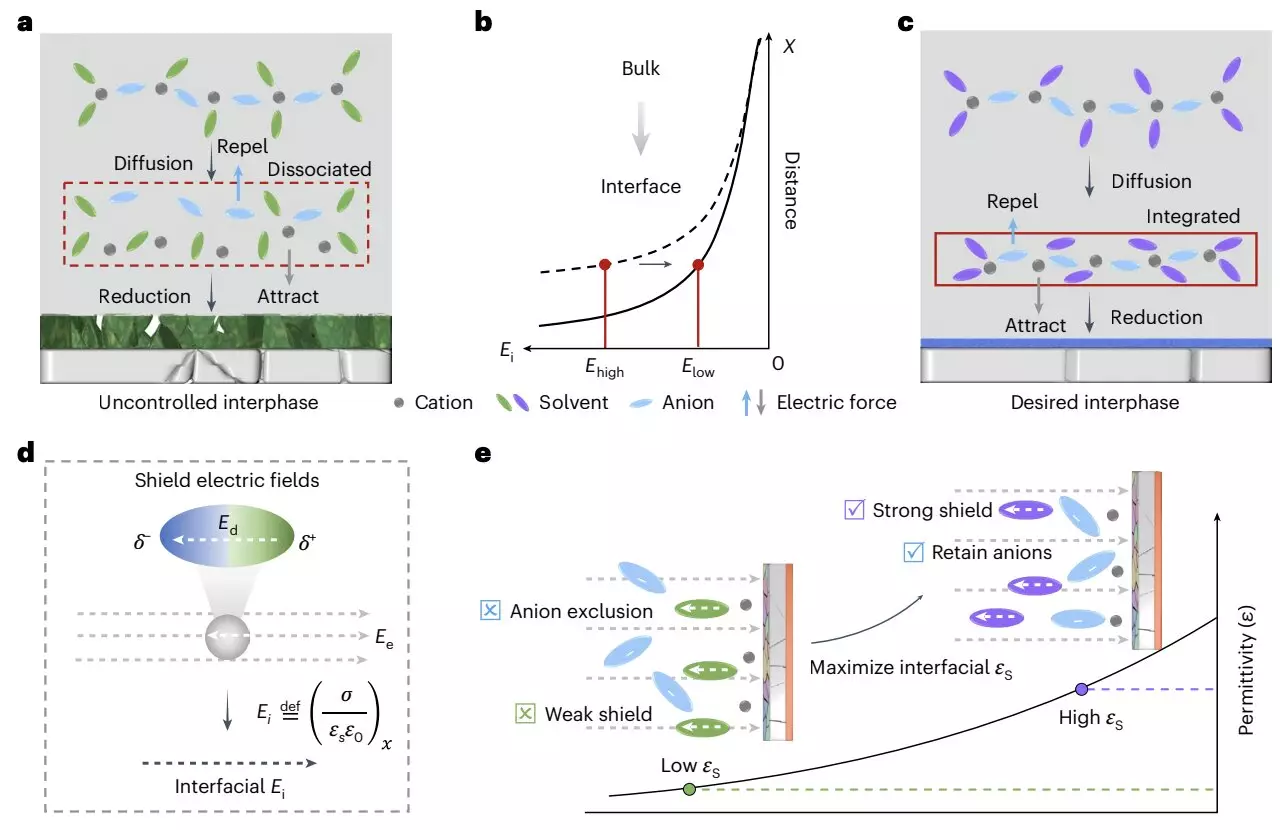The interface between electrodes and electrolytes plays a critical role in the performance of batteries, particularly in the realm of energy density and efficiency. As global demands for energy storage solutions continue to rise, the development of batteries that can provide more power in a smaller form factor has become paramount. Among emerging technologies, lithium-metal batteries (LMBs) have garnered significant attention due to their potential to surpass traditional lithium-ion batteries (LiBs). Specifically, LMBs replace conventional graphite anodes with lithium metal, which theoretically allows for higher energy densities and quicker charging times. However, despite their appealing characteristics, LMBs are not without challenges.
The pursuit of advancing LMB technology faces several hurdles. High manufacturing costs, limited Coulombic efficiency, and the problematic growth of lithium dendrites during charging are major concerns that researchers must address. Lithium dendrites are needle-like structures that can form on lithium metal anodes, leading to short circuits and posing risks of overheating or fires—serious hazards that could deter widespread adoption of this technology. These issues hinder the full exploitation of LMB potential, creating a pressing need for innovative strategies to enhance their performance and safety.
Redesigning the Electrolyte Environment
A pivotal strategy to mitigate the risks associated with LMBs lies in the careful design of electrolytes to regulate lithium ion (Li+) solvation structures. By fostering the growth of a stable solid-electrolyte interphase (SEI)—a critical layer that forms between the anode and electrolyte—researchers hope to stabilize the electrode/electrolyte interface. A recent study by researchers at Zhejiang University has surfaced, exploring the dielectric environment in these batteries and its effects on interface stability. This was achieved through a novel dielectric protocol, aiming to enhance performance and safety.
The collaborative effort spearheaded by researchers at Zhejiang University was published in the prestigious journal Nature Energy. Their work reflects a fresh approach to LMB design focusing on the binding dynamics of cation-anion pairs in the presence of a high dielectric environment. By modulating dielectric properties, the researchers sought to preserve the integrity of these pairs, hence ensuring a more favorable environment for the formation of the SEI. Co-author Xiulin Fan emphasized the importance of these advancements, specifically in the context of the growing electric vehicle market, which intensifies the need for batteries capable of exceeding 500 Wh/kg in energy density.
The researchers’ protocol utilizes non-solvating solvents with high dielectric constants, fortifying cation-anion pairs against separation due to electric fields. This methodological shift aims to foster an anion-rich environment near the battery’s interface, ultimately impacting the electrochemical behavior positively. This innovative design not only seeks to improve performance metrics but also addresses safety concerns by refining the interfacial chemistry of lithium deposits.
Implications and Future Directions
The findings from this study present several implications for the future of energy storage technology. The development of an ultra-lean electrolyte tested in lithium-metal pouch cells showcased promising results with an energy density of 500 Wh/kg. This suggests that by adopting the dielectric protocol, researchers may be closing the gap between current battery technology and the high-performance needs of upcoming energy demands.
Moreover, the findings suggest that tailoring electrolyte compositions based on the spatial distribution of ions could enable further enhancements in battery performance. Other research groups can leverage these insights to explore alternative formulations for LMBs, potentially leading to the discovery of more efficient and safer battery solutions.
As the world accelerates towards a low-carbon economy, the development of high-energy-density batteries like lithium-metal batteries is crucial for supporting electric vehicles and renewable energy storage. The research coming out of Zhejiang University exemplifies how understanding and manipulating the electrode/electrolyte interface can pave the way for safer, more efficient energy storage solutions. Through continued innovation in battery design, particularly regarding the dielectric properties of electrolytes, there lies immense potential for significant improvements in the reliability and performance of next-generation batteries. All in all, as our reliance on batteries grows, the importance of addressing inherent challenges and enhancing technological reliability cannot be overstated.

